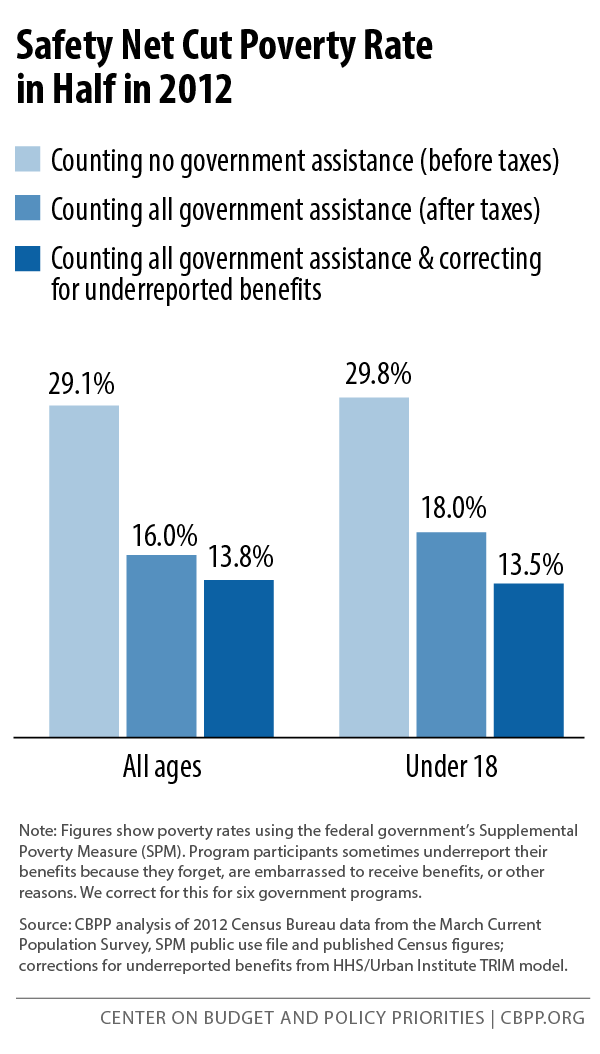BEYOND THE NUMBERS
The safety net cut the poverty rate from 29.1 percent to 13.8 percent in 2012 and lifted 48 million people above the poverty line, including 12 million children, our new paper shows.
That’s an even bigger impact than previous studies have found because our figures, unlike earlier studies, correct for households’ underreporting of the benefits they receive. (See chart.)
Correcting for underreporting also shows that the safety net does more to reduce deep poverty — income below half the poverty line — than previously shown, although 11.2 million Americans remained in deep poverty in 2012.
In addition to correcting for underreported benefits, our paper uses the Census Bureau’s Supplemental Poverty Measure (SPM). Unlike the official poverty measure, the SPM counts government non-cash benefits like food assistance and rent subsidies as income. It also subtracts from a household’s income various taxes paid, work expenses, and out-of-pocket medical spending.
Social Security raises more Americans out of poverty than any other program: 27.4 million in 2012. Among programs limited to people with low or modest incomes, SNAP (formerly food stamps) has the greatest poverty-reducing impact, lifting 10.3 million people out of poverty in 2012. (Before correcting for underreporting, SNAP lifted “only” about 5 million people above poverty that year.)
The refundable tax credits for low-income working families — the Earned Income Tax Credit and Child Tax Credit — have an impact comparable to SNAP’s. Together they, too, lifted about 10 million people out of poverty in 2012.
Our paper’s state-by-state data shows that the safety net lifted thousands out of poverty in every state, from 61,000 in Wyoming to 4.9 million in California.

